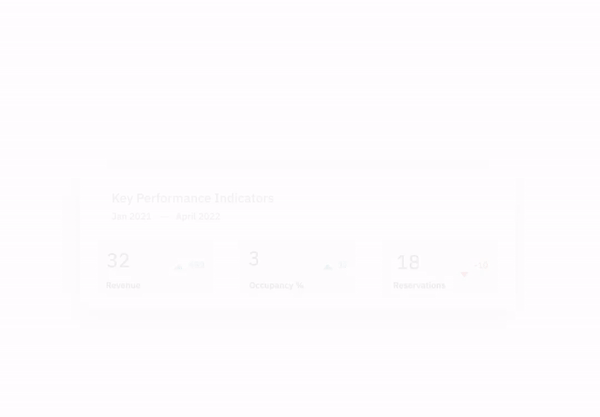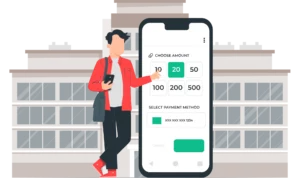Airbnb hosting offers tremendous opportunities for property owners to generate income by renting out their spaces to travelers. However, one critical aspect determining success in this industry is the hosts’ seasonal pricing for Airbnb strategy. In this blog, we will delve into the intricacies of a pricing strategy for high and low seasons for your Airbnb property, providing insights and tips to help hosts maximize their profits throughout the year.
Understanding high and low seasons in the Airbnb market:
High and low seasons are distinct periods within the Airbnb market characterized by fluctuations in demand, pricing, and traveler behavior. Understanding these seasons is crucial for vacation rental hosts to effectively adjust their seasonal pricing for Airbnb strategies and maximize their revenue potential.
Strategies for seasonal pricing for Airbnb for high seasons:
During high seasons hosts have the opportunity to maximize their earnings.
1. Research market trends:
Conducting thorough research is essential to identify peak demand periods and events that drive bookings in your area. Analyze historical data and market trends with a tool like the (MD Link) to understand pricing patterns. Consider unique factors or local events that impact demand and adjust your seasonal pricing for Airbnb strategy accordingly.
2. Set competitive rates:
Research and compare the pricing of similar properties in your area during high seasons. Aim to set competitive rates that reflect the value and amenities your listing offers. Location, property size, amenities, and guest experience affect your pricing.
3. Implement dynamic pricing:
Implement dynamic pricing strategies to adjust your rates in real-time based on fluctuations in demand and supply. Leverage dynamic pricing tools or software like PriceLabs Dynamic Pricing software that considers occupancy rates, competitor prices, and market demand.
4. Adjust minimum stay requirements:
You can consider implementing longer minimum stay requirements during high seasons to ensure maximum occupancy and revenue. Evaluate the optimal minimum stay duration based on historical booking patterns, guest preferences, and market conditions. You can also use PriceLabs MinStay recommendations to set your minimum stay restrictions. A longer min-stay for high season is a great strategy, but you should also customize your stay restrictions to account for orphan days. Adjusting your minimum stay customization for orphan days is crucial to drive higher occupancy rates and maximize revenue. PriceLabs minimum stay customizations allow you to capture these gaps automatically to help save time and effort.


5. Monitor and respond to guest feedback:
Monitor guest reviews and feedback during high seasons to gauge guest satisfaction. Address any concerns or issues promptly to maintain a positive reputation and attract future bookings. Positive reviews and high ratings significantly impact your pricing power and success during high seasons.
Strategies for seasonal pricing for Airbnb for low seasons:
Low seasons can present unique challenges for hosts, but can still achieve profitability with the right Airbnb pricing strategy.
1. Assess market demand:
During low seasons, assessing your area’s demand level is essential. Analyze historical data and market trends to understand booking patterns and identify any potential opportunities. Consider local events, holidays, or off-peak travel periods that may influence demand. You can use PriceLabs Market Dashboard to identify months when the demands are lower than usual and determine your seasonal pricing for Airbnb accordingly.
2. Lower your prices for low seasons:
To attract guests during low seasons, setting competitive prices is crucial. Research and compare the pricing of similar properties in your area. Aim for rates lower than or on par with competitors while reflecting the value and amenities your listing offers.
3. Flexibility in booking options:
During low seasons, you will benefit from offering flexibility in booking options. Consider offering shorter minimum stay requirements or last-minute discount options to accommodate travelers planning spontaneous trips or shorter getaways. This flexibility can attract guests who prefer more freedom in their travel plans.
4. Value-added Offerings:
To enhance the appeal of your listing during low seasons, consider offering value-added amenities or services. This can include complimentary breakfast, flexible cancellation policies, discounts for longer stays, or additional perks that set your listing apart from others. Highlight these offerings in your listing description to attract guests.
5. Target niche markets:
Identify niche markets or special interest groups that may be more inclined to travel during low seasons. Tailor your marketing efforts towards these specific segments by highlighting activities or attractions that align with their interests. For example, budget travelers prefer to travel during low seasons. You can offer them discounts or create a package deal to get more bookings from them. This targeted approach can help attract guests during otherwise slower periods.
Optimizing seasonal pricing for Airbnb for shoulder seasons:
Shoulder seasons, between high and low seasons, require hosts to employ a specific pricing strategy.
1. Identify shoulder season periods:
Identify your area’s shoulder season periods by analyzing historical booking data and market trends. Look for periods when demand and pricing may be moderate compared to high seasons but less low than during off-peak times.
2. Adjust seasonal pricing for Airbnb based on supply and demand:
During shoulder seasons, the demand for accommodations may vary. Adjust your pricing strategy based on the supply and demand dynamics of the market. If occupancy is still relatively high, you can maintain higher rates compared to low seasons. If demand is lower, consider offering more competitive pricing to attract guests.
3. Promote special offers or packages:
During shoulder seasons, create special offers or packages to entice guests to choose your listing. Consider offering discounts for extended stays and midweek bookings, or bundle additional services or amenities at a discounted rate. Promote these offers through your listing description, social media, and targeted marketing campaigns to attract guests during these transitional periods.
4. Highlight unique selling points:
Differentiate your listing during shoulder seasons by highlighting its unique selling points. Emphasize specific features, amenities, or experiences that set your property apart. Whether it’s a stunning view, proximity to attractions, or special services, showcasing these aspects can make your listing more appealing to guests during shoulder seasons.
5. Update your property
This strategy will not bring immediate revenue but will be beneficial in the long run. Shoulder or low seasons are the best time to revisit the property if you have meant to update it to make it more desirable. You can work on adding any extra amenities that can help you draw more occupancy and revenue. You can also get new professional pictures clicked and update your listing description to highlight these amenities.
The role of data and analytics in Airbnb pricing strategy:
Data and analytics are crucial in formulating effective pricing strategies for both high and low seasons in the Airbnb market. By utilizing a dynamic pricing tool like PriceLabs, hosts can leverage the power of data-driven insights to optimize their pricing strategy. Here’s how PriceLabs’ features help hosts in high and low seasons:
1. Market trends and competitor analysis:
PriceLabs utilizes data and analytics to analyze market trends and competitor pricing. It gathers information on historical booking patterns, including length of stay and lead time information, market demand, and competitor daily rates. Hosts can gain insights into pricing trends during high and low seasons, allowing them to set competitive rates that reflect the value and demand for their property as seasons change. You can analyze your competition using PriceLabs Neighborhood Data Dashboard.
2. Automate dynamic pricing:
PriceLabs helps hosts identify peak demand periods during high seasons and adjust rates to maximize revenue by employing advanced algorithms to forecast demand and automatically adjust pricing in real-time, allowing hosts to attract guests in low seasons by setting competitive rates that align with the reduced demand. Hosts can implement dynamic pricing strategies that optimize occupancy rates and revenue by leveraging data and analytics. Watch how JP Palombo, CEO of PureStay UK, used PriceLabs to automate his Airbnb seasonal pricing strategies.
3. Customizable pricing rules:
PriceLabs allows hosts to set customizable Airbnb seasonal pricing rules based on their preferences and property-specific factors. Hosts can create custom seasonal profiles with PriceLabs defining pricing rules for high and low seasons, including minimum and maximum prices. You can create pre-set groups with different Portfolio Occupancy Based Adjustments, last minute and orphan gap discounts for different seasons and use them as seasons change.
4. Performance tracking and analytics:
PriceLabs offers performance tracking; with PriceLabs Portfolio Analytics, hosts can analyze critical metrics such as occupancy rates, revenue per available room, and booking trends for their listings. By evaluating the performance of their pricing decisions, hosts can identify areas for improvement, make necessary adjustments, and refine their strategy for high and low seasons.


Conclusion:
An effective pricing strategy is fundamental to success in the short-term rental market, particularly during high and low seasons. Hosts can maximize their profits and achieve long-term success by understanding demand dynamics, leveraging data-driven insights, and employing dynamic pricing strategies.
Frequently Asked Questions
How do I set a seasonal minimum stay on Airbnb?
You can follow these steps to set a seasonal minimum stay on Airbnb. Firstly, log in to your Airbnb host account and navigate to your listing’s calendar. Then, click on the specific dates or range of dates you want to set a minimum stay requirement. A pop-up window will appear where you can adjust the minimum stay requirement for those dates. Choose the desired minimum stay duration, save the changes, and the seasonal minimum stay will be set. This allows you to control the length of stays based on different seasons, ensuring that guests adhere to your desired minimum stay requirements during specific periods.
How do you set different prices for different months on Airbnb?
To set different prices for different months on Airbnb, log in to your host account and navigate to your listing’s calendar. Select the dates you want to adjust the prices for and click on the specific dates or date range within that month. A pop-up window will appear, allowing you to modify the prices for those specific dates. You can also have a selection of pre-set rules called “Rule Sets” that apply your changes. Then, you can set higher rates for peak months or seasons when demand is high and lower rates for off-peak months or seasons. Save the changes, and the different monthly prices will be applied to your listing. You can also use a tool like PriceLabs dynamic pricing software to automate your pricing strategy for different seasons.









